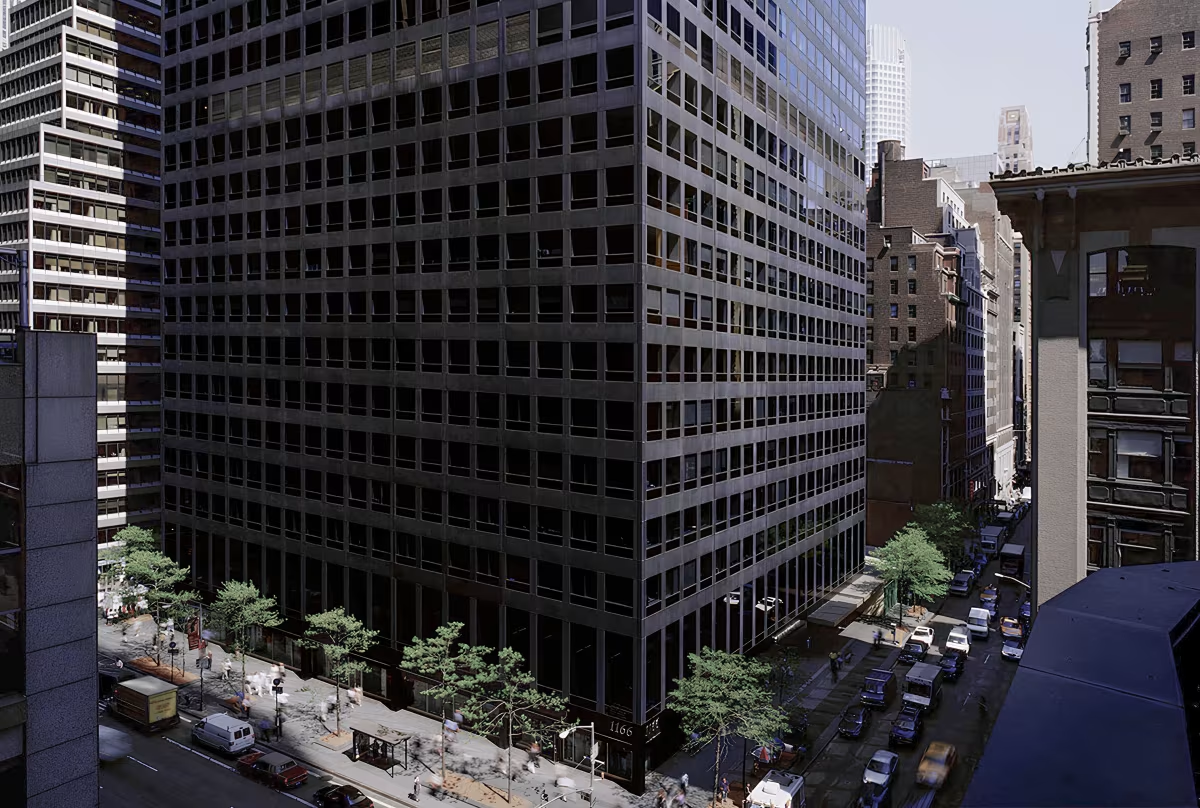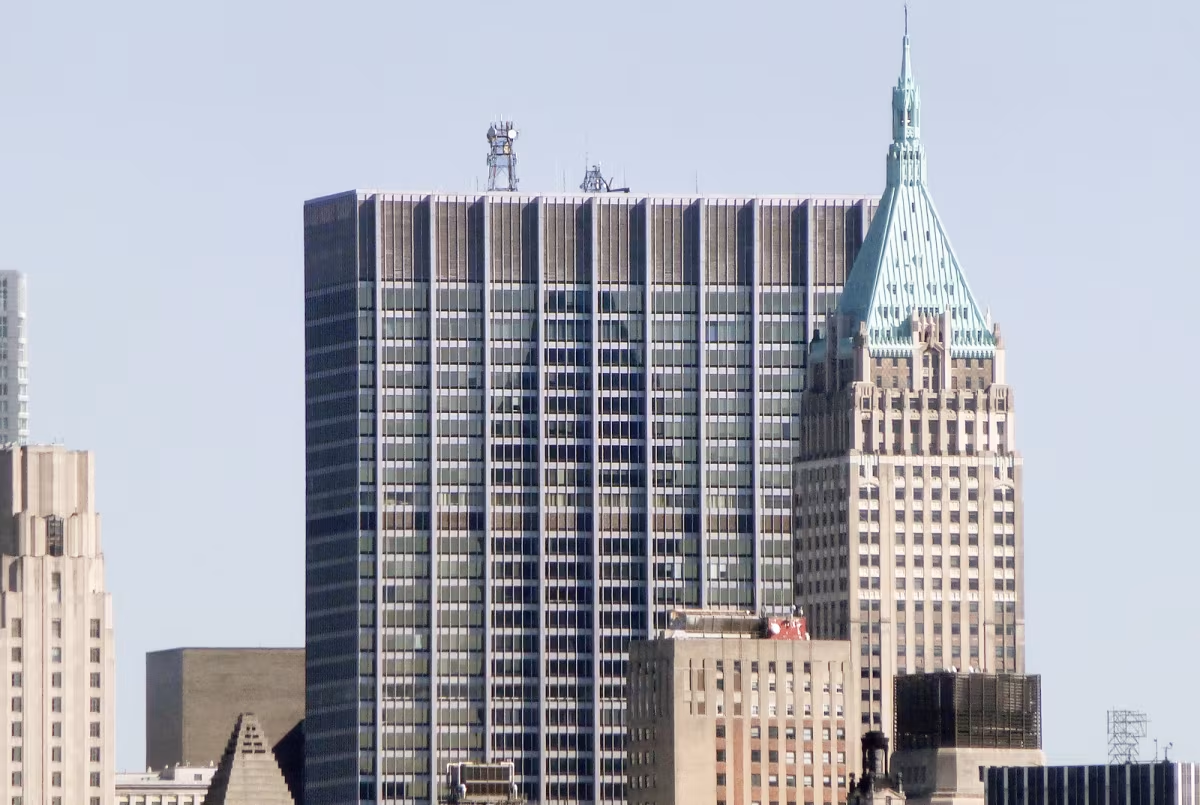1166 Avenue of the Americas Building vs 28 Liberty Street Building


Comparing the 1166 Avenue of the Americas Building and the 28 Liberty Street Building is particularly interesting because they share the same skyline in New York, NY, and were both designed by Skidmore, Owings & Merrill. However, they were completed more than 13 years apart.
This offers a unique perspective on how the architect's style and the city's architecture evolved over time.
Height & Size
The 28 Liberty Street Building is clearly the larger tower of the two, both in terms of height and number of floors. It rises to 814ft (248m) with 60 floors above ground, while the 1166 Avenue of the Americas Building reaches 600ft (183m) with 44 floors above ground.
28 Liberty Street Building also offers more total built-up area, a total fo 2,240,000 sqf (208,103m2), which is about 679,105 sqf (63,091m2) more than what the 1166 Avenue of the Americas Building offers.
Of course, each project may have faced different briefs or regulatory constraints, which we don't really know about and could also explain the outcome.
Architectural Style
Both the 1166 Avenue of the Americas Building and the 28 Liberty Street Building were designed in line with the aesthetic conventions of the International Style style.
The 1166 Avenue of the Americas Building was designed at a moment when the International Style style was already in decline, making it more of a lingering expression of the movement. In contrast, the 28 Liberty Street Building style was already in decline, making it more of a lingering expression of the movement. In contrast, the 28 Liberty Street Building was built when the style still carried greater cultural weight.
Uses
Both the 1166 Avenue of the Americas Building and the 28 Liberty Street Building were designed to serve as commercial towers, and that has remained their main use since their completion, serving similar roles in the urban fabric.
Structure & Facade
Both the 1166 Avenue of the Americas Building and the 28 Liberty Street Building rely on a Frame structural system.
A frame structure uses a grid of columns and beams to carry the building's loads. This frees the walls from structural duties, allowing for flexible floor plans and larger windows.
They also employ the same type of facade, a Curtain Wall facade.
A curtain wall is a non-load-bearing facade hung from the structural frame. It is anchored to floor slabs and transfers only its own weight and wind loads, allowing for sleek, glassy exteriors.
| 1166 Avenue of the Americas Building | 28 Liberty Street Building | |
|---|---|---|
| Skidmore, Owings & Merrill | Architect | Skidmore, Owings & Merrill |
| 1974 | Year Completed | 1961 |
| International Style | Architectural Style | International Style |
| Commercial | Current Use | Commercial |
| 44 | Floors Above Ground | 60 |
| 2 | Floors Below Ground | 5 |
| 183 m | Height (m) | 248 m |
| 145012 | Built-up Area (m²) | 208103 |
| 28 | Number of Elevators | 37 |
| Frame | Structure Type | Frame |
| Steel | Vertical Structure Material | Concrete And Steel |
| Concrete, Steel | Horizontal Structure Material | Concrete |
| No | Facade Structural? | Yes |
| Aluminum, Glass | Main Facade Material | Aluminum, Glass |
| Jaros Baum & Bolles | MEP Engineer | Jaros Baum & Bolles |
| WSP Cantor Seinuk | Structural Engineer | Skidmore, Owings & Merrill, And Weiskopf & Pickworth LLP |
| KAWS, Roy Lichtenstein | Collaborating Artist | Isamu Noguchi, And Jean Dubuffet |
| NY | State | NY |
| New York | City | New York |
| 1166 6th Avenue | Address | 28 Liberty Street |